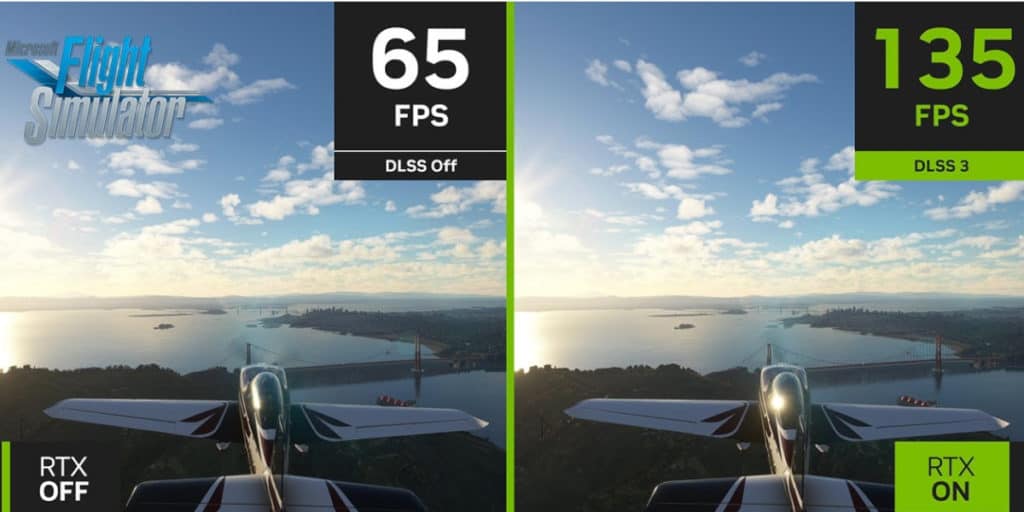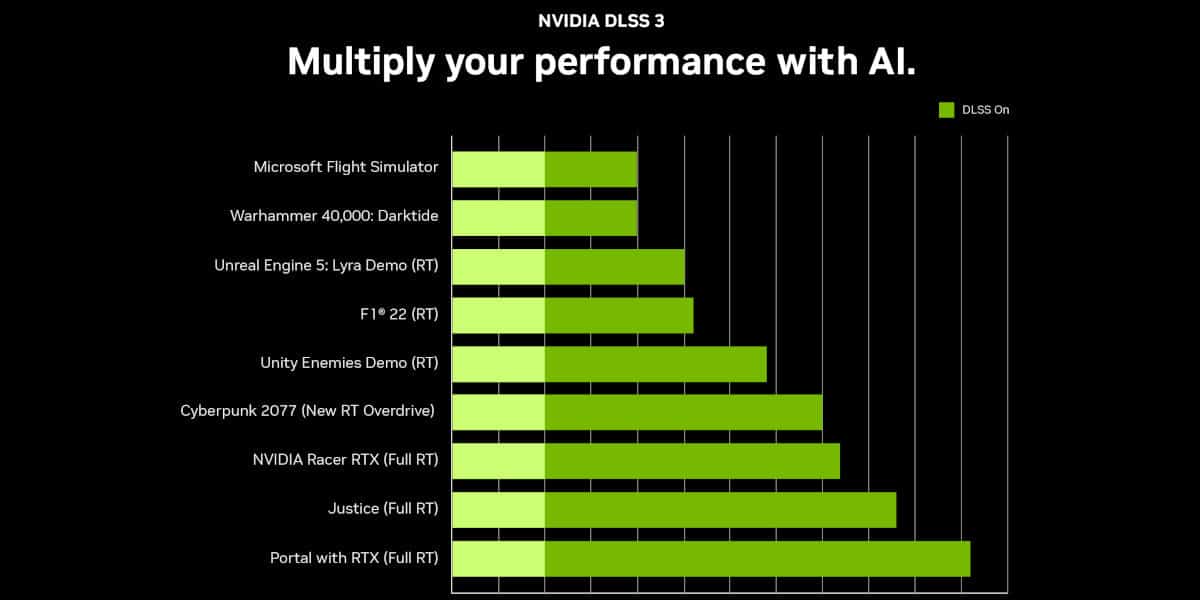Last Updated on
There’s a new generation of RTX graphics cards coming, and with them, the unveiling of Nvidia DLSS 3. The newly revised A.I. super sampling technology will be present in every Ada Lovelace architecture video card, with the release of the RTX 4080 and RTX 4090 just around the corner.
What is Nvidia DLSS 3?
Nvidia DLSS 3 is A.I. accelerated resolution rendering which allows for higher frame rates and better performance than that of what’s possible with native hardware. In short, it takes the strain off of your graphics card and allows for GPU-intensive processes, such as ray tracing, without pushing the GPU to its limits.
What makes DLSS 3 different from previous iterations is how the Deep Learning Super Sampling works this time around. The fourth generation Tensor cores, present in all RTX 4000 series graphics cards, utilize what Nvidia is calling Optical Multi
Frame Generation.

What makes Optical Multi Frame Generation different from the existing technology is that this process generates new frames instead of pixels. A.I. is used to fill in the blanks and interpret what should be on screen when the images are rendered in real-time. This is what provides a substantial performance boost when compared to DLSS running on existing Ampere hardware.
Backing this up is the new Optical Flow Accelerator that’s baked into Ada architecture to analyze and calculate images and corresponding motion vector data for objects on-screen respectively. This addition means that the likes of ray-traced lighting and shadows will behave more realistically while being less demanding on the GPU.
The existing super-resolution upscaling technology present which is powered by the Tensor cores interacts with the new advancements made to generate faithful and accurate images when compared to native performance. Through the combination of these technologies, you will get far higher frame rates and more consistent performance in higher resolutions.
How much better is Nvidia DLSS 3?
If we take Nvidia’s recently published benchmarks for DLSS 3 into account, then we’re looking at up to a 50% increase in certain demanding titles. The hardware manufacturer used Cyberpunk 2077 as an example. As can be seen in the video above, DLSS 2 delivered more-than-playable framerates of the game running at 60 FPS. Whereas DLSS 3 can do the same at over 90 FPS.
This can be evidenced in the demonstration of Microsoft Flight Simulator as well. Without DLSS, you’re looking at around 60 FPS, however, with DLSS 3 enabled, that framerate nearly doubles to upwards of 110 and above when contrasted with native hardware. This is a huge jump and shows that intensive games could finally be achieving higher frame rates without compromise.
When is Nvidia DLSS 3 going to be released?
Nvidia DLSS 3 will be released on Wednesday, October 12 which is the release date of the RTX 4000 series. This will be the launch version, but we’re expecting many updates and iterations on the tech as the hardware continues to mature.
What games will support Nvidia DLSS at launch?
Nvidia has confirmed that over 35 different games and software will support DLSS 3 at release. Notable titles in the lineup include the aforementioned Cyberpunk 2077 and Microsoft Flight Simulator but also the recently unveiled Portal with RTX, and Nvidia Racer RTX as well.
Older titles can benefit from DLSS 3 as well including Hitman 3, Dying Light 2 Stay Human, The Witcher 3: Wild Hunt, Destroy All Humans! 2 – Reprobed, and F1 22. It goes both ways, too, as upcoming games such as Atomic Heart, S.T.A.L.K.E.R 2: Heart of Chornobyl, The Lord of the Rings: Gollum, and Warhammer 40,000: Darktide have supported confirmed as well.
As DLSS 3 builds upon the existing DLSS 2 framework, we’re expecting many developers to take advantage of the newest version of the tech in titles new and old after October has come and gone.



